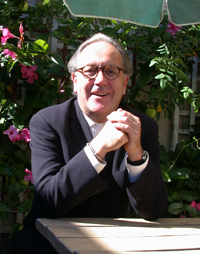Two great quotes from Richard Elmore

Apparently it’s Richard Elmore Day in my electronic inboxes today. Here are two great quotes…
From Using technology to move beyond schools (Elmore & City):
With rare exceptions, schools currently treat the digital revolution as if it never happened. Computers, more often than not, still sit in dedicated rooms, accessible only with adult supervision. Laptops, when they are used at all in classrooms, are frequently employed as electronic worksheets, digital typewriters, and presentation producers, rather than as extensions of students’ access to knowledge. When students do use technology to extend the reach of their learning, they typically do so by visiting predigested information sources and cutting and pasting information into predetermined, teacher-driven formats. “Social networking” among students is treated as a subversive activity engaged in by kids who are up to no good, and certainly not as a promising point of entry to anything that might be called “learning.”
When students step out the door of the institution called school today, they step into a learning environment that is organized in ways radically different from how it once was. It’s a world in which access to knowledge is relatively easy and seamless; in which one is free to follow a line of inquiry wherever it takes one, without the direction and control of someone called a teacher; and, in which, with a little practice, most people can quickly build a network of learners around just about any body of knowledge and interests, unconstrained by the limits of geography, institutions, and time zones. If you were a healthy, self-actualizing young person, in which of these environments would you choose to spend most of your time?
The basic problem with this scenario, however, is this: The more accessible learning becomes through unmediated relationships and broad-based social networks, the less clear it is why schools, and the people who work in them, should have such a large claim on the lives of children and young adults, and the more the noneducational functions of schooling come to the fore.
From What would happen if we let them go? (Elmore):
what would happen if we simply opened the doors and let the students go; if we let them walk out of the dim light of the overhead projector into the sunlight; if we let them decide how, or whether, to engage this monolith? Would it be so terrible? Could it be worse than what they are currently experiencing? Would adults look at young people differently if they had to confront their children on the street, rather than locking them away in institutions? Would it force us to say more explicitly what a humane and healthy learning environment might look like? Should discussions of the future of school reform be less about the pet ideas of professional reformers and more about what we’re doing to young people in the institution called school?
For those of you who don’t know Dr. Elmore, he’s the Gregory R. Anrig Professor of Educational Leadership at Harvard University. As you might imagine, he is quite smart and is widely recognized as one of America’s leading thinkers about classroom instruction and school curriculum. If you haven’t read School Reform from the Inside Out or Instructional Rounds in Education, it’s probably time that you did.
Here’s a video that I made in 2007 of an excerpt from one of his speeches. Happy reading (and watching)!





